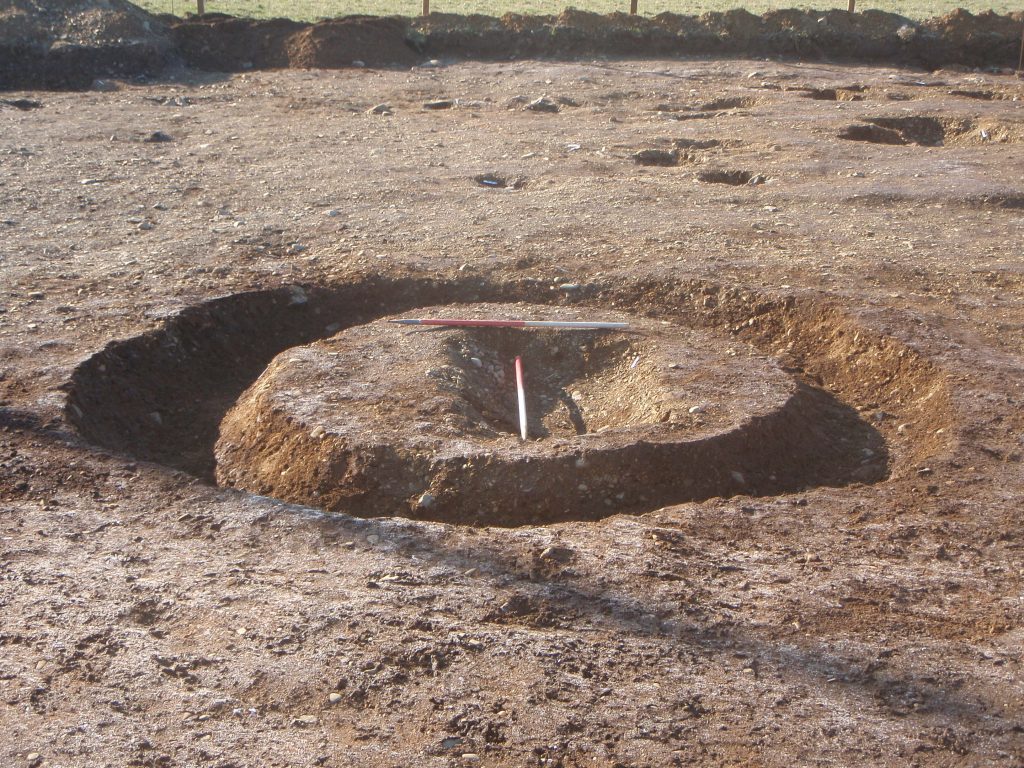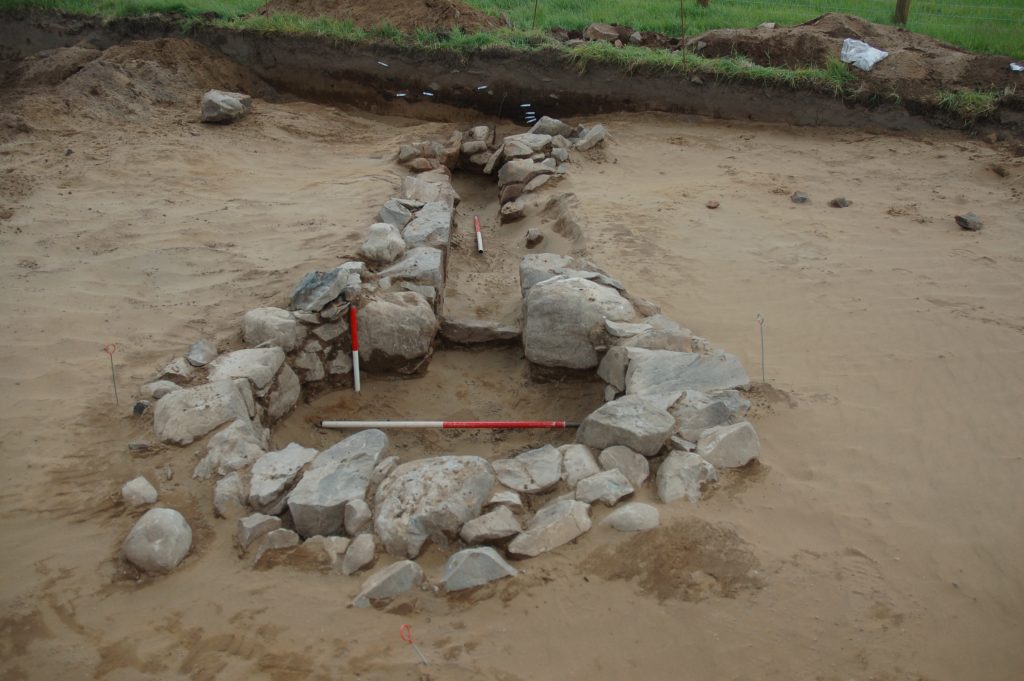The construction phase involved a team of GUARD Archaeologists monitoring the topsoil stripping and dealing with any archaeology as it was encountered. Following on from the 11 areas expanded earlier, and using the findings from the evaluation to highlight areas of greater archaeological potential, the construction phase revealed further archaeology extending outwith each key area.

For example, the removal of topsoil to the south and west of the original Mesolithic site revealed a continuation of Mesolithic features, including further structural remains, bringing the total potential house structures to three. Employing a grid system across the area, lithic artefacts were recovered in layers and their distribution mapped. Significant quantities of lithic material were recovered – over 13,500 pieces not including the material recovered from the first house.

Further Neolithic archaeology was uncovered in proximity to the East Challoch site and dates to the Beaker period (c. 2500 BC) burial contexts were encountered with finds such as Jet bead jewellery, Beaker pottery and flint artefacts.

In proximity to the Boreland Cottage Upper site, further Bronze Age cremations and related features were uncovered. The expansion of the Iron Age site at Myrtle Cottage revealed a kiln and other features related to the Iron Age settlement site.

